It’s getting harder to determine how we are affecting the environment— especially with regard to discharges into streams, rivers, estuaries, and the ocean. The easy things have been done; it’s getting more and more complicated.
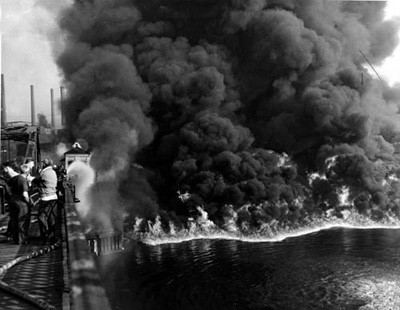
On November 3, 1952, the Cuyahoga River in Cleveland, Ohio caught on fire. And it wasn’t the first time. Since 1868, the river has been ablaze over a dozen times. Five people lost their lives in the 1912 fire, and the one in 1952 caused over a million dollars in damages. The fire that helped change the trajectory of the environmental movement occurred on June 22, 1969, and made national news because, as we know, rivers are not supposed to catch on fire. It also contributed to the creation of the National Environmental Policy Act, signed into law by President Richard Nixon on January 1, 1970. Provisions of the law created the Environmental Protection Agency.
It didn’t take a rocket scientist to figure out why the Cuyahoga River kept catching on fire—it was obvious to anyone living or working in the area at the time. The cause was related to the practice of dumping environmental waste (in this case, flammable petroleum products and related trash) into the nearest handy water body and hoping it would just go away. In this case, the flammable nature of some of the waste made the whole dirty practice visible in a dramatic way. As noted by Ohio History Central, the 1969 fire was caused by sparks from a passing train igniting pieces of oil slicked debris. It reached the height of a five-story building at its peak. A spark from a passing train…that’s how easy it was to catch the Cuyahoga River on fire in the 1960s, and how easy it was to figure out what happened.
Unfortunately, the issue of discharging (a nicer word than “dumping”) pollutants into the environment has become more complicated since then. And even with regulations in place to reduce the risk to us and our fellow creatures, it presents a formidable challenge going forward. Let me show you how things have changed through four examples:
Love Canal, New York

Love Canal is a cautionary tale of what happens when the decisions made by industrial chemical companies and municipalities cause long-term damage to both the environment and human health. The challenges at Love Canal were greater and more complex than the stuff going on in the Cuyahoga River because the waste was buried in the ground and not initially visible to the human eye. And the bad things didn’t happen immediately. Instead, the danger lurked below the surface before it began to plague the local community. It took a lot of digging (literally and figuratively) to figure out what was going on, and lawyers were involved.
As described by Eckardt Beck in the EPA Journal, the Love Canal story started out innocently enough: a man named William T. Love wanted to create a model city in the northwestern corner of New York State. He even started digging a canal between the upper and lower Niagara Rivers to provide cheap hydroelectric power to his home and for the local industry he hoped would arrive. For a variety of reasons, the project fell apart, and the unfinished canal was used as a municipal and industrial dump site. In the early 1950s, Hooker Chemical Company covered the 16-acre canal with dirt, and sold it to the city of Niagara Falls for $1. Hooker Chemical later stated in a deposition that between 1942 and 1953, 21,800 tons of chemical waste had been disposed of at the site.
As Mr. Beck noted, “It was a bad buy.”
Over time, the area around the site became a residential community, with about 100 homes and a school built directly adjacent to the dump site. By 1972, nearly all houses with backyards bordering the landfill were completed. A few years later, those people and others living in the area began complaining about a chemical smell that was making them sick. In the late 1970s a record rainfall in the area caused the buried chemicals to emerge. Corroded waste drums literally popped up in the back yards of people adjacent to the dump site. Vegetation was killed, adults and children became sick, and strong chemical smells filled the air. And worse yet, the birth defect rates increased dramatically compared to other locations in New York. Samples from the drums and adjacent sediment were obtained and sent off for chemical analysis. The list of chemicals was terrifying, with over 200 distinct chemical compounds identified, including 11 that are suspected carcinogens.
In the end, Love Canal became a SuperFund site, and the state of New York purchased the residents’ homes and relocated over 200 families. The cleanup took 21 years and cost $400 million. Current residents near the site have complained about health issues and believe the area is still toxic.
Toms River, New Jersey
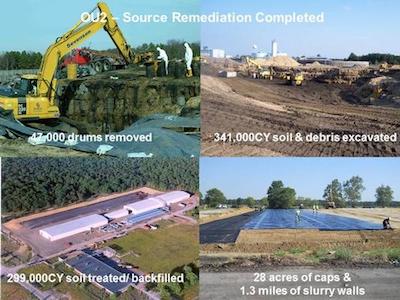
Our next example is another horror story of industrial waste mismanagement, but on an even larger scale that involved, in addition to contaminated soil and groundwater, discharges to a river and ocean estuary. Toms River is an unincorporated community in coastal New Jersey located about 55 miles east of Philadelphia. It may or may not have been settled by somebody named Tom. In the early 1950s, a Swiss company named Ciba-Geigy purchased 1,400 acres and set up an operation to manufacture dyes, resins, epoxies, and other chemicals. Dye manufacturing was, and is, a very big deal. The complex process to make them is extremely waste-intensive, creating hazardous waste products that require special management and disposal.
As demand for their products grew, the plant, renamed the Toms River Chemical Corporation, used a portion of their land and the nearby Toms River for chemical waste disposal. In the early days, there was little environmental oversight and almost no documentation of waste stream volumes or composition. Over time, contaminants dumped on Ciba-Geigy property and other nearby locations they leased from the locals, found their way into the nearby aquifers, affecting local water wells. The local kids quit swimming in the river because the waste discharge made it uninhabitable for both people and fish, especially during low flow events in the summer. In the early 1960s, public complaints about drinking water, fish kills in the river, and allegations of illegal dumping activities were reported in local papers, but little was done to regulate the biggest employer in Dover Township. As public concern mounted, regulatory agencies began forcing Ciba-Geigy to clean up their upland disposal sites, and in 1985, the company decided that instead of discharging contaminated water and treated wastewater to the river, they would instead dump it in the Atlantic Ocean via a ten-mile-long pipeline. You can imagine what the coastal beach owners and local fishermen thought of this grand idea.
In 1983, the site was placed on the Superfund National Priorities list, and a remedial investigation was initiated by EPA in 1984. Cleanup activities have focused primarily on treating contaminated soil and groundwater and the digging up and disposing of waste drums scattered around the property and at leased offsite areas. Commercial operations at the site ceased in 1996.
The story of Toms River illustrates the dangers of unregulated chemical discharge and dumping, and the challenges of initiating cleanup actions when a toxic soup of chemicals is released into soil, groundwater, river, and ocean environments over a long period of time. In some ways, it was similar to Love Canal, but the scope and complexity was much greater, given there were discharges of toxic chemicals to land, groundwater, a river, and the Atlantic Ocean. Accurately identifying what was in the waste streams (and assessing the danger) was difficult in the 1960s and is still challenging today. EPA data indicate approximately 10 billion gallons of contaminated groundwater have been treated and nearly 50,000 chemical storage drums have been removed from the site.
EPA’s website for this site indicates Site Ready for Reuse and Redevelopment “has not been achieved.” Contaminated groundwater removal will likely continue for decades.
Longfellow Creek, Washington
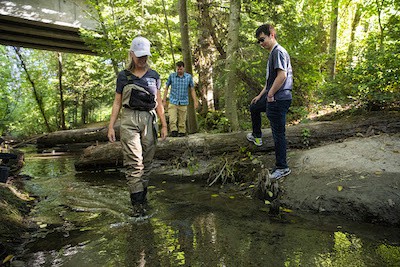
Longfellow Creek is a small stream that flows through residential and industrial areas near downtown Seattle, Washington. Recent restoration actions in the creek and nearby Duwamish River into which it flows have made it possible for salmon to once again spawn in this area—a really good thing. But then something started to go wrong: returning adult salmon were dying in the creek before they could spawn, and nobody knew why. You could literally stand on the bank of the creek and watch it happen. Given the importance of salmon in the Pacific Northwest, there was widespread concern, and multiple scientific investigations were launched to figure out what was going on.
If Longfellow Creek was a murder mystery, there would be dozens of suspects (including the butler, of course), presenting a host of challenges for even the best movie detective. First, parts of the creek are located in an industrial area with lots of traffic and activity, so there were multiple routes for contaminants to enter the water. Second, when young salmon leave their natal streams and venture into the estuary and ocean, nobody knows exactly where they go or how long they stay in a given place. That means there are many opportunities for exposure to toxins and no way of knowing if they are dying from something they encountered in Longfellow Creek, from something they were exposed to earlier in their life cycle, or both. This final example illustrates how difficult it is to determine “who dunnit” when the dead subject is an organism that ranges all over the coastal oceans for multiple years, and there are a large number of potential murder weapons, including predation, disease, or exposure to maybe a couple of thousand chemicals present in the creek. Or maybe it’s something else we don’t even know about yet.
But the scientific community kept at it, and in 2020, came up with a plausible murder weapon: car tires. Yup, the butler did it with a Michelin, sort of. After years of study, sleuthing, and just plain hard work, the scientists at the University of Washington discovered that a compound used to keep tires from breaking down called N-(1,3-dimethylbutyl)-N′-phenyl-p-phenylenediamine, or 6PPD, was the likely cause of the salmon deaths. The article was published in Science in January 2021, which is a really big deal in my world. And here’s the most telling statement, made by Edward Kolodzij, co-author of the Science article:
The Next Frontier: COPECS
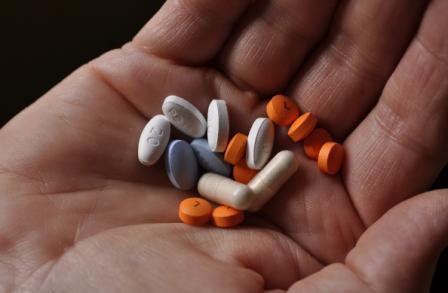
With regard to environmental pollution, you can see from the examples above that over time, it has become increasingly difficult to determine the chemical actors involved, who might be harmed, and how to fix it. In a sense, all the easy problems have been solved, or at least addressed, and now we’re left with the Longfellow Creek-kind of challenges, where scientists are confronted with a problem in an ecosystem filled with thousands of potentially harmful chemicals. In a way, Longfellow Creek gives us a glimpse into what could be the next challenge we will face: COPECs. COPEC is an acronym popular with EPA-types and technical nerds that means “contaminants of potential ecological concern.” The important word in that phrase is “potential” because there are literally thousands of COPECS, and we only have reliable information on the environmental and human health risk of a small percentage. Oh, and some of them are really hard to measure analytically, and once they are in the environment, they can degrade into other things, become metabolized into something else when they are ingested, or hang out together, creating complex mixtures that act quite differently than their individual components.
To give you an idea of why COPECs matter, I once did a scientific study that looked at the kinds of COPECs in reclaimed wastewater in South Florida that was being considered for an industrial use, or even for injection into shallow aquifers. I found out there were hundreds of chemicals that the local state-of-the-art sewage treatment plants could not effectively remove before they discharged the effluent to rivers, estuaries, or the ocean. The list was interesting, as it included chemicals you find in shampoo and skin-care products, DEET- a bug repellent, pharmaceuticals like warfarin, a blood thinner; Viagra (it’s Florida, after all), and a host of other chemicals with long, complicated names, including some that are suspected of causing cancer or doing long-term harm to sensitive aquatic species.
A bit closer to my home, researchers found 49 COPECs in sediments in the main stem of the Lower Columbia River and several tributaries along the Washington-Oregon border, and a “myriad of pharmaceuticals and personal care products” were detected in the effluent from wastewater treatment plants discharging into the river. These kind of studies have prompted the Washington State Department of Ecology to look closely at the potential environmental issues associated with wastewater COPECs, and their website provides a lot of good information concerning how to minimize our personal impacts.
The upshot is the release of COPECs (unintentionally or deliberately) into rivers, estuaries, and oceans may be the next thing we need to seriously think about, especially with regards to wastewater treatment facilities, given the massive amounts of water they discharge each and every day. For instance, the Newtown Creek Wastewater Plant near Brooklyn, New York, discharges about 250 million gallons per day (MGD), representing about 18% of the city’s wastewater. The West Point Treatment Plant in Seattle discharges between 90 and 300 MGD into Puget Sound, depending on weather conditions. Tremendous volumes of water are entering rivers and estuaries 24/7, carrying who knows what.
Final Thoughts
As you read through the examples, I hope you realize how far we’ve come since the days of fiery rivers and waste drums popping up in back yards. We’re better at detecting things, better at predicting things, and better at being good environmental detectives. And it’s a good thing, because the problems are getting more and more challenging. It used to be pretty easy to see what was wrong, because things blew up, bubbled up in backyards, or made themselves painfully obvious when you realized that diving into your old swimming hole was actually burning your skin.
The problems we face now are subtle, quiet things that lurk in the shadows but could be just as dangerous over time if we don’t take them seriously.
Everyone who reads this will come to their own conclusions and have varying states of anxiety concerning the future. I assume some of you will conclude that all is lost, and that our past and present practices will eventually erase us from the planet. Others will rely on science and technology to save us from our past (and future) bad decisions, even though the same science and technology are partly responsible for the problems in the first place. In the case of the Cuyahoga River, the situation has vastly improved: multibillion-dollar investments have been made to clean up the river and improve wastewater treatment practices, the river now supports around 60 different fish species, and there hasn’t been a fire since 1969. This kind of outcome gives me hope that science, coupled with local involvement, can help us recover from past mistakes. It’s also why I encourage young people to consider STEM (science, technology, engineering, math) careers, and mentor them when they do. I call it “training our replacements.” It matters a lot to me.
I am also examining my own behaviors and practices as a form of personal responsibility because I believe a lot of small actions can collectively make a huge difference. I find myself reading the labels of commonly used things in my home: sunscreen, shampoo, cleaning products, and medications. Sometimes I visualize where they might end up and what kinds of living things they might affect, both directly and indirectly through the food chain. I do this to remind myself that it’s up to me to be a good environmental steward, because the last thing we need are more complex problems and legacy waste issues, no matter how good our next generation of scientists and engineers are. I’ll end this with one of my signature mixed metaphors that sums up our current situation:
Just because rivers don’t catch on fire anymore doesn’t mean we’re out of the woods.
Information Sources
Cuyahoga River
Cuyahoga River Fire, Ohio History Central, https://ohiohistorycentral.org/w/Cuyahoga_River_Fire
Columbia River
Chemicals of Emerging Concern in the Columbia River, Environmental Protection Agency, https://www.epa.gov/columbiariver/chemicals-emerging-concern-columbia-river
Love Canal
The Love Canal Tragedy, Eckardt C. Beck, EPA Journal, January 1979. https://archive.epa.gov/epa/aboutepa/love-canal-tragedy.html
Exclusive: Are Love Canal Chemicals Still Making People Sick?, Dan Herbeck, The Buffalo News, https://buffalonews.com
Residents Say Love Canal Chemicals Continue to Make Them Sick, PBS Newshour Weekend, https://www.pbs.org/newshour/show/residents-say-love-canal-chemicals-continue-to-make-them-sick
Love Canal: A Special Report to the Governor & Legislature: April 1981, New York State Department of Health, https://www.health.ny.gov/environmental/investigations/love_canal/lcreport.htm
Toms River
CIBA-GEIGY Corp. Toms River, NJ, Cleanup Activities, US Environmental Protection Agency, Superfund, https://cumulis.epa.gov/supercpad/SiteProfiles/index.cfm?fuseaction=second.cleanup&id=0200078
Toms River, A Story of Science and Salvation, Dan Fagin, https://www.danfagin.com/website/books/
Toms River: Pollution and its Cancerous Wake, Dan Fagin, GreenBizz, https://www.greenbiz.com/article/toms-river-pollution-and-its-cancerous-wake
Wastewater Treatment Plants
Newtown Creek Wastewater Treatment Plant, Wikipedia, https://en.wikipedia.org/wiki/Newtown_Creek_Wastewater_Treatment_Plant
Municipal Wastewater Infrastructure in the Hudson River Watershed, Riverkeepers.org, https://www.riverkeeper.org/wp-content/uploads/2019/06/Riverkeeper-Wastewater-in-the-Hudson-Watershed-Handout.pdf
West Point Treatment Plant, King County, Seattle, https://kingcounty.gov/sites/depts/dnrp/wtd/system/west.aspx
Longfellow Creek
Tire-related Chemical is Largely Responsible for Adult Coho Salmon Deaths in Urban Streams, Sarah McQuate, University of Washington News, December 3, 2020., https://www.washington.edu/news/2020/12/03/tire-related-chemical-largely-responsible-for-adult-coho-salmon-deaths-in-urban-streams
A Ubiquitous Tire Rubber–derived Chemical Induces Acute Mortality in Coho Salmon, Zhenyu Tian, Haoqi Zhao, Katherine T. Peter, Melissa Gonzales, and Jill Wetze., Science, January 8, 2021, https://science.sciencemag.org/content/371/6525/185
COPECS
Contaminants of Emerging Concern in Wastewater, Washington State Department of Ecology, https://ecology.wa.gov/Water-Shorelines/Water-quality/Wastewater/Contaminants-of-Emerging-Concern
Evaluation of Emerging Contaminants of Concern at the South District Wastewater Treatment Plant Based on Seasonal Events, Miami-Dade County, Florida, 2004, A.C. Lietz and M.T. Meyer, US Geological Survey, SIR 2006-5240, https://pubs.usgs.gov/sir/2006/5240/
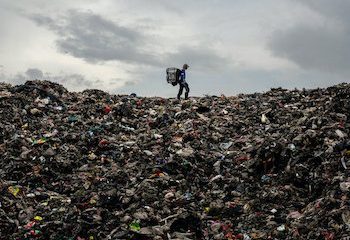
0 Comments